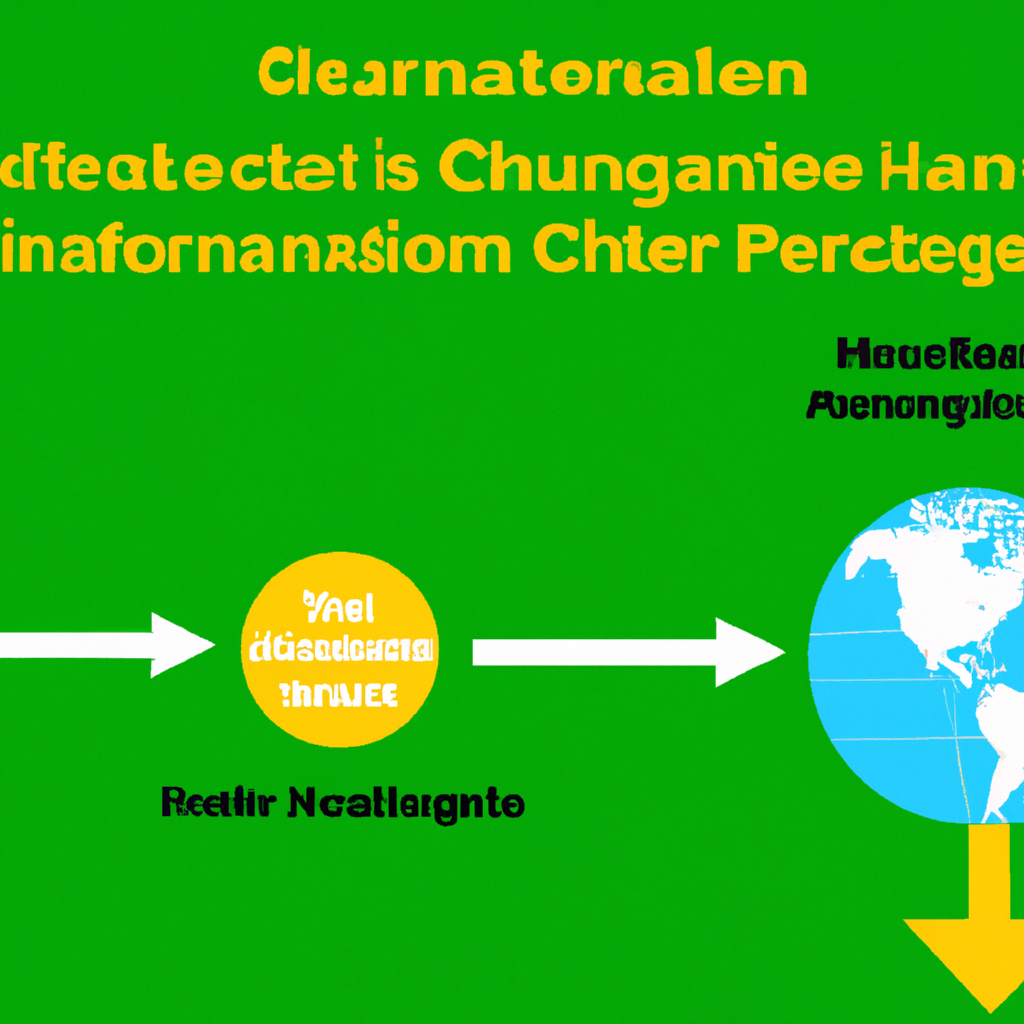
The topic of climate change has been a hotly debated issue for decades, with many different perspectives and opinions being presented. In this blog post, we will critically analyze the proposition that human activities are the main cause of climate change, using various critical thinking methods.
Word and Concept Analysis: To begin, we must first define and analyze the key terms in this proposition. “Human activities” refers to any actions taken by individuals, societies, governments, and businesses that have an impact on the environment. “Main cause” implies that these activities are the primary reason for climate change. And “climate change” is the long-term alteration of Earth’s climate patterns, including temperature, precipitation, and extreme weather events.
Person Analysis: The roles and contributions of different actors in this proposition are crucial to consider. Individuals contribute to climate change through their daily actions, such as driving cars and consuming energy. Societies and governments play a significant role in setting policies and regulations that can either mitigate or worsen the effects of climate change. Businesses also have a responsibility to reduce their carbon footprint and adopt sustainable practices. The effects of climate change on these actors can vary, from economic impacts on businesses to displacement and health consequences for individuals and communities.
Situation Analysis: The proposition that human activities are the main cause of climate change can be both true and false, depending on the situation. For example, in the case of deforestation, human activities such as logging can contribute to climate change by reducing the number of trees that absorb carbon dioxide. However, in the case of natural disasters like hurricanes, human activities may not be the main cause, but they can exacerbate the effects of these events.
Historical Perspective Analysis: Looking at history, we can see that human activities have played a significant role in climate change. The Industrial Revolution in the 19th century marked a significant increase in human activities that emitted greenhouse gases into the atmosphere. However, before this, climate change was primarily influenced by natural factors such as volcanic eruptions and changes in Earth’s orbit.
Empirical Evidence Analysis: Numerous studies have shown a strong correlation between human activities and climate change. The burning of fossil fuels, deforestation, and industrial processes have all contributed to the increase in greenhouse gases in the atmosphere, leading to rising temperatures. However, some argue that natural factors also play a significant role, and the extent of human influence is still debated.
Consistency Analysis: When evaluating the consistency of this proposition, conflicting perspectives must be considered. Economic growth pressures and technological determinism often conflict with efforts to reduce carbon emissions and combat climate change. It is essential to critically analyze these conflicting propositions and perspectives to find balanced solutions.
Conceptual Clarity Analysis: The concept of climate change is complex, and there can be ambiguities in its interpretation. It is crucial to provide clear definitions and emphasize the importance of conceptual clarity to avoid misunderstandings and misinformation.
Practical Application Analysis: The practical applicability of this topic is crucial to consider. While reducing human activities may be the most effective way to mitigate climate change, it is not always practical or feasible. The high costs of transitioning to renewable energy and lack of education on sustainable practices can pose significant challenges.
Subjective and Objective Comments Analysis: When analyzing subjective and objective comments from different groups on this topic, potential biases must be evaluated. Activists may be more inclined to emphasize the role of human activities, while some scientists may highlight the influence of natural factors. It is vital to critically evaluate and consider all perspectives.
Emotional Reactions Analysis: People’s emotional responses to climate change can vary greatly. Some may feel anxious and fearful about the future, while others may feel indifferent or even deny the existence of climate change. These emotional reactions can impact the success of efforts to combat climate change and must be taken into account.
Systematic Review: Climate change can be evaluated within different theoretical models and systems, such as economic, sociological, and environmental perspectives. However, some theories may be inconsistent with the proposition that human activities are the main cause of climate change. For example, the economic theory of growth may conflict with efforts to reduce emissions.
Interdisciplinary Approach Analysis: By examining climate change from multiple disciplines, we can gain a more comprehensive understanding of the issue. The economic, sociological, and environmental perspectives all have valuable insights to contribute, and it is essential to consider how these disciplines may support or oppose the proposition.
Sociological Impact Analysis: The potential impact of climate change on social structures, inequalities, norms, and behaviors must be critically analyzed. Low-income individuals, rural communities, and marginalized groups are at higher risk for the effects of climate change, highlighting the importance of creating inclusive and fair policies.
Inclusivity and Diversity Analysis: The effects of climate change may disproportionately affect different demographic groups, such as genders, ethnicities, and the elderly or young. It is crucial to consider their unique challenges and vulnerabilities and strive for inclusivity and diversity in climate action.
Temporal Factors Analysis: Climate change is a long-term issue, and its effects can span decades or even centuries. It is essential to critically assess the short, medium, and long-term effects of human activities on climate change and plan accordingly.
Innovation and Creativity Analysis: Climate change has sparked innovative and creative solutions, such as renewable energy technologies and sustainable practices. However, it also requires continuous innovation and creativity to address its complex and evolving nature.
In conclusion, the critical thinking methods used in this blog post have provided a deep, analytical perspective on the proposition that human activities are the main cause of climate change. By considering different perspectives and evaluating evidence and impacts, we can gain a better understanding of this complex issue and work towards effective solutions.
